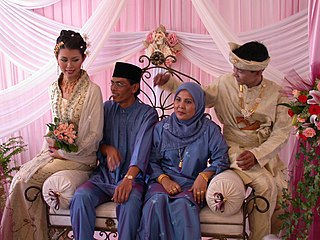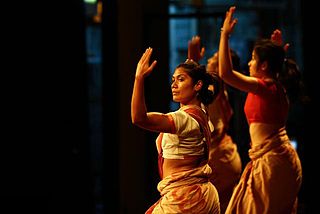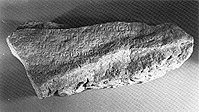
As of June 2023, the population of Singapore stands at 5.92 million. Of these 5.92 million people, 4.15 million are residents, consisting of 3.61 million citizens and 540,000 permanent residents (PRs). The remaining 1.77 million people living in Singapore are classed as non-residents, a group consisting mainly of resident workers without political rights who are routinely excluded from official demographic statistics.

The Indian Rebellion of 1857 was a major uprising in India in 1857–58 against the rule of the British East India Company, which functioned as a sovereign power on behalf of the British Crown. The rebellion began on 10 May 1857 in the form of a mutiny of sepoys of the company's army in the garrison town of Meerut, 40 mi (64 km) northeast of Delhi. It then erupted into other mutinies and civilian rebellions chiefly in the upper Gangetic plain and central India, though incidents of revolt also occurred farther north and east. The rebellion posed a military threat to British power in that region, and was contained only with the rebels' defeat in Gwalior on 20 June 1858. On 1 November 1858, the British granted amnesty to all rebels not involved in murder, though they did not declare the hostilities to have formally ended until 8 July 1859.
The Chitty, also known as the Chetty or Chetti Melaka, are a distinctive group of Tamil people found mainly and originally in Melaka, Malaysia, and in Singapore where they migrated to in the 18th and 19th centuries from Melaka, who are also known as the "Indian Peranakans" and have adopted Malay (mostly) and Chinese cultural practices whilst also retaining their Hindu faith and heritage. In the 21st century, their population stands at 2,000. The Chitty/Chetti community or Chettiar community, is from South India and are devout Hindus.

Malay Singaporeans are Singaporeans of Malay ancestry, including those from the Malay Archipelago. They constitute approximately 13.5% of the country's citizens, making them the second largest ethnic group in Singapore. Under the Constitution of Singapore, they are recognised by the government as the indigenous people of the country, with Malay as the national language of Singapore.

Indian Singaporeans are Singaporeans of Indian or of general South Asian ancestry. They constitute approximately 9.0% of the country's citizens, making them the third largest ancestry and ethnic group in Singapore.

The establishment of a British trading post in Singapore in 1819 by Sir Stamford Raffles led to its founding as a British colony in 1824. This event has generally been understood to mark the founding of colonial Singapore, a break from its status as a port in ancient times during the Srivijaya and Majapahit eras, and later, as part of the Sultanate of Malacca and the Johor Sultanate.

The Tamil diaspora refers to descendants of the Tamil speaking immigrants who emigrated from their native lands in the southern Indian subcontinent to other parts of the world. They are found primarily in Malaysia, Arab states of the Persian Gulf, South Africa, North America, Western Europe, and Singapore. It can be divided into two main diasporic clusters, due to geographical, historical and cultural reasons, as Indian Tamil diaspora and Sri Lankan Tamil diaspora.

The languages of Singapore are English, Chinese, Malay and Tamil, with the lingua franca between Singaporeans of different races being English, the de facto main language. Singaporeans often speak Singlish among themselves, an English creole arising from centuries of contact between Singapore's internationalized society and its legacy of being a British colony. Linguists formally define it as Singapore Colloquial English. A multitude of other languages are also used in Singapore. They consist of several varieties of languages under the families of the Austronesian, Dravidian, Indo-European and Sino-Tibetan languages. The Constitution of Singapore states that the national language of Singapore is Malay. This plays a symbolic role, as Malays are constitutionally recognised as the indigenous peoples of Singapore, and it is the government's duty to protect their language and heritage.

Hindu religion and culture in Singapore can be traced to the 7th century AD, when Temasek was a trading post of Hindu-Buddhist Srivijaya empire. A millennium later, a wave of immigrants from southern India were brought to Singapore, mostly as coolies and indentured labourers by the British East India Company and colonial British Empire. As with Malay peninsula, the British administration sought to stabilise a reliable labour force in its regional plantation and trading activities; it encouraged Hindus to bring family through the kangani system of migration, settle, build temples and segregated it into a community that later became Little India.

The history of the modern state of Singapore dates back to its founding in the early 19th century; however, evidence suggests that a significant trading settlement existed on the island in the 14th century. The last ruler of the Kingdom of Singapura, Parameswara, was expelled by the Majapahit or the Siamese before he founded Malacca. Singapore then came under the Malacca Sultanate and subsequently the Johor Sultanate. In 1819, British statesman Stamford Raffles negotiated a treaty whereby Johor would allow the British to locate a trading port on the island, ultimately leading to the establishment of the Crown colony of Singapore in 1867. Important reasons for the rise of Singapore were its nodal position at the tip of the Malay Peninsula flanked by the Pacific and Indian Oceans, the presence of a natural sheltered harbour, as well as its status as a free port.

Singapore in the Straits Settlements refers to a period in the history of Singapore between 1826 and 1942, during which Singapore was part of the Straits Settlements together with Penang and Malacca. Singapore was the capital and the seat of government of the Straits Settlement after it was moved from George Town in 1832.

The early history of Singapore refers to its pre-colonial era before 1819, when the British East India Company led by Stamford Raffles established a trading settlement on the island and set in motion the history of modern Singapore.
Chindian (Hindi: चीनी-भारतीय; Chinese: 中印人; pinyin: Zhōngyìnrén; Cantonese Yale: Jūngyanyàn; Tamil: சிந்தியன்; Telugu: చిండియన్స్; is an informal term used to refer to a person of mixed Chinese and Indian ancestry; i.e. from any of the host of ethnic groups native to modern China and India. There are a considerable number of Chindians in Malaysia and Singapore. In Maritime Southeast Asia, people of Chinese and Indian origin immigrated in large numbers during the 19th and 20th centuries. There are also a sizeable number living in Hong Kong and smaller numbers in other countries with large overseas Chinese and Indian diaspora, such as Jamaica, Trinidad and Tobago, Suriname and Guyana in the Caribbean, as well as in Indonesia, the Philippines, the United States, Canada, United Kingdom, Australia, and New Zealand.
Indian Filipinos are Filipinos of Indian descent who have historical connections with and have established themselves in what is now the Philippines. The term refers to Filipino citizens of either pure or mixed Indian descent currently residing in the country, the latter a result of intermarriages between the Indians and local populations.

The 1915 Singapore Mutiny, was a mutiny of elements of the British Indian Army's 5th Light Infantry in the colony of Singapore. Up to half of the regiment, which consisted of Indian Muslims predominantly from Muslim Rajput background, mutinied on 15 February 1915 due to rumours that they would be sent to fight against the largely Muslim Ottoman Empire as part of the Middle Eastern theatre of World War I. The mutineers killed 36 soldiers and civilians before the mutiny was suppressed by Allied forces. After the mutiny, more than 205 mutineers were tried by court-martial, and 47 were sentenced to execution by firing squad.
South Asian languages in Singapore are mainly used by the country's 348,119 Indian Singaporean residents, who form about 9.2% of Singaporean citizens and permanent residents. As a result of historical migration and settlement patterns, Indian Singaporeans came to the island from various parts of South Asia speaking a variety of South Asian languages, mostly Tamil. Today, most ethnic Indians in Singapore are locally born second, third, fourth or even fifth generation descendants of immigrant forefathers. In addition, a substantial minority are recent immigrants from the Indian subcontinent.
Malaysian Telugus, consists of people of full or partial Telugu descent who were born in or immigrated to Malaysia. Most Malaysian Telugus are descended from migrants from Madras Presidency during the colonial period. Historically, most Malaysian Telugus originated from the Visakhapatnam, Vizianagaram and Srikakulam regions of what is now Andhra Pradesh. More recent migrants came from the states of Telangana, Orissa and Bengal. While most Telugus came to Malaysia as crop labourers, some were professionals and traders who arrived as refugees, for example, in the 1930s following anti-Indian riots in Burma and during World War II, when the Japanese invaded Burma.

Overseas Indians, officially Non-Resident Indians (NRIs) and People of Indian Origin (PIOs) are Indians who reside or originate outside of India. According to the Government of India, Non-Resident Indians are citizens of India who currently are not living in India, while the term People of Indian Origin refers to people of Indian birth or ancestry who are citizens of countries other than India. Overseas Citizenship of India (OCI) is given to People of Indian Origin and to persons who are not People of Indian Origin but married to Indian citizen or People of Indian Origin. Persons with OCI status are known as Overseas Citizens of India (OCIs). The OCI status is a permanent visa for visiting India with a foreign passport.

Malaysian Indians or Indo-Malaysian are Malaysian citizens of Indian or South Asian ancestry. They now form the third-largest group in Malaysia, after the Malays and the Chinese. Most are descendants of those who migrated from India to British Malaya from the mid-19th to the mid-20th centuries. Most Malaysian Indians are ethnic Tamils; smaller groups include the Malayalees, Telugus and Punjabis. Malaysian Indians form the fifth-largest community of Overseas Indians in the world. In Malaysia, they represent the third-largest group, constituting 7% of the Malaysian population, after the ethnic Malays and the Chinese. They are usually referred to simply as "Indians" in English, Orang India in Malay, "Yin du ren" in Chinese.

Singaporeans are the citizens and nationals of the sovereign island city-state of Singapore. Singapore is home to a people of a variety of ethno-racial origins, with the city-state itself being a multi-racial, multi-cultural, multi-religious, and multi-lingual country. Singaporeans of Chinese, Malay, Indian and Eurasian descent have made up the overwhelming majority of the population since the 19th century. The Singaporean diaspora is also far-reaching worldwide.

















